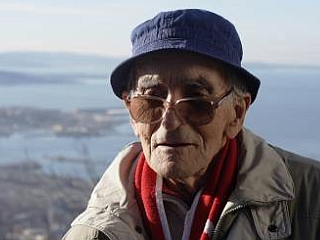
Much of the 20th century was a turbulent time for the Slovenian people. They endured invasions from neighboring countries, several border changes, a succession of regimes, and frequent protests. Some of the most memorable images of those times were taken by a man named Edi Šelhaus. He rose to prominence during World War II and continued to capture the people, places, and events of 20th century Slovenia.
Born in the village of Podkraj in 1919, when Europe was still recovering from the destruction of World War I, Šelhaus spent a part of his childhood in Trieste, where both of his parents were photographers. However, the family’s stay in that coastal city was cut short by the coming to power of Mussolini’s Fascists. The Šelhaus family fled to the newly created South Slavic state.
As a young man, Šelhaus was frequently ill and eventually left school, but he became an excellent photographer himself. In 1943, however, the outside world intruded into his life. When he learned that he was about to be drafted into the German army, Šelhaus joined the Slovenian resistance. After being wounded, he was assigned to the photography unit of the Partisans.
For the rest of the war, he photographed the resistance in its struggle against the occupying forces. Some of his photographs have become timeless documents of World War II in Slovenia.
After the war, he returned to Trieste, this time to film life in the ethnically divided city for Yugoslavia’s state-owned newsreel company. He also worked as a still photographer for several newspapers, both in Italy and Yugoslavia. During his stay in Trieste, he covered protests calling for the annexation of Trieste by Yugoslavia. At the protests, Šelhaus was beaten up and arrested several times. He even spent some time in jail. But his photographs became well-respected throughout Yugoslavia, and other photographers openly admired his ability to capture motion on film.
Šelhaus returned to Slovenia in 1955. He spent the rest of his career chronicling life in Tito’s Yugoslavia as a photojournalist for several publications, and helped his mother run a photography studio. Today, the Museum of Contemporary History in Ljubljana alone holds more than 80,000 of his photographs.
Šelhaus retired in 1973. He spent much of his retirement writing books and investigating the story of allied airmen who were rescued by the Partisans during World War II.
The man who did so much to preserve the faces and events of 20th century Slovenia died in 2011. He was 91 years old.
Jaka Bartolj

































































